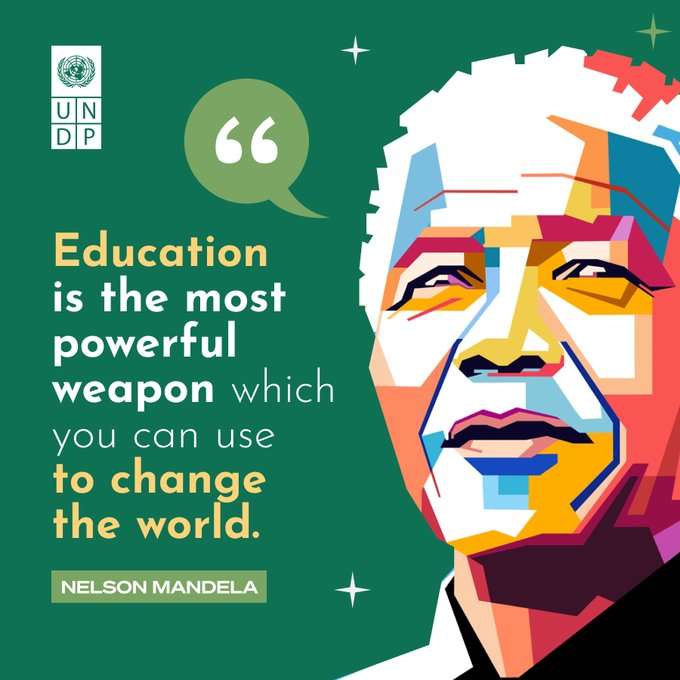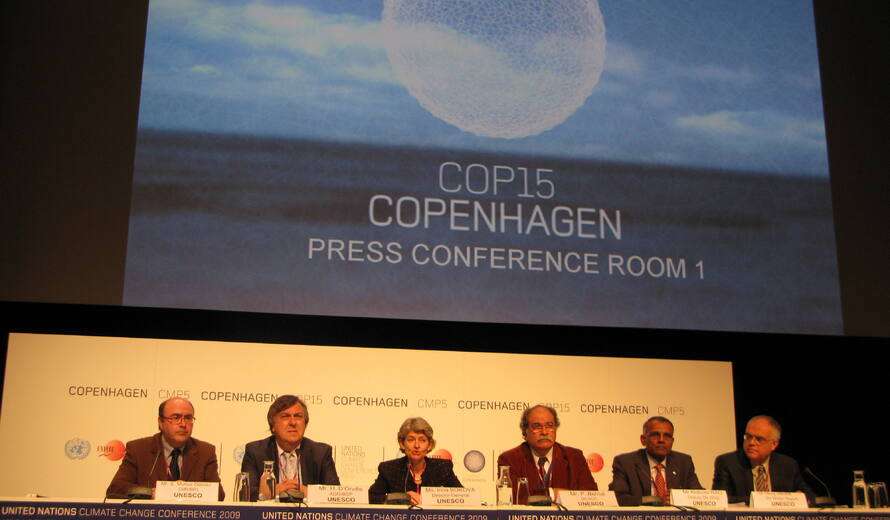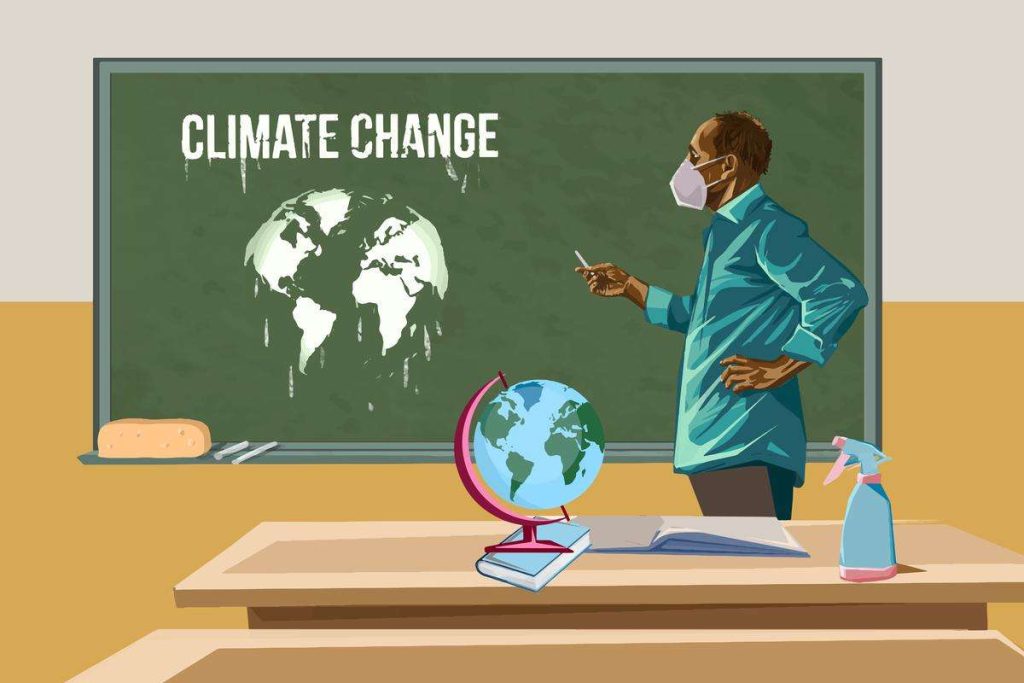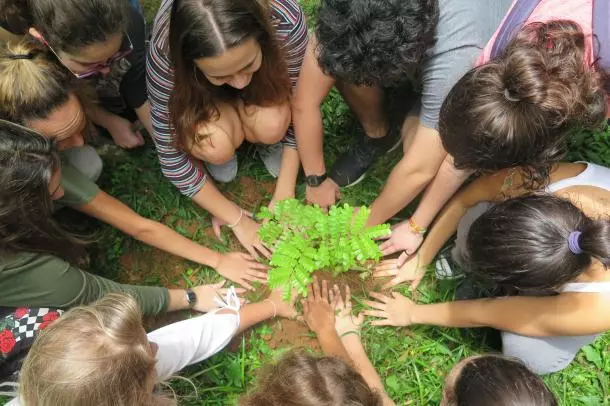Education is so powerful that it can bring about the necessary transformation in one’s life. This transformation helps an individual to think, act, and respond in a reasonable way towards society and the environment. Education has the power to change the mindset and behaviour of an individual towards making better informed decisions. Interestingly, education can be gained in a formal, informal, and non-formal way and at any age.
The famous Nelson Mandela once said, “Education is the most powerful weapon which you can use to change the World.” Yes, we need this power to change the World by changing the climate. Climate change refers to long-term shifts in temperatures and weather patterns, and studies have shown humans are the main driving force behind such shifts. According to UNESCO (United Nations Educational, Scientific, and Cultural Organization), the majority of the Earth’s warming has occurred in the past 35 years, which contributes to a rise in average global temperatures by 1.2° C since 1800’s.

The Initiative…
United Nation understands education is that catalyst, which can instil people with realisation of global warming and increased awareness to fight climate change. Basically, helping us understand how changing climate and living beings influence and impact each other. This awareness can be brought about using innovative educational approaches in a formal and non-formal setting eventually reaching out to all people of all ages.

In 2009, the UNESCO Climate Change Initiative was launched, covering four thematic areas:
- Scientific
- Educational
- Environmental
- Ethical
The Educational theme focused on Climate Change Education (CCE) to support overall Education for Sustainable Development (ESD) program 2030. ESD 2030, lays strong thrust on education, to answer, the pressing challenges to sustainability. It aims to increase awareness and knowledge of learners through action-oriented and innovative pedagogy approaches. The UN states that education is central to progressing and achieving of all Sustainable Development Goals (SDGs).
CCE involves innovative approaches to educate audiences (with particular focus on youth), to understand, address, mitigate, and adapt to climate change. It encourages the changes in attitudes and behaviours required for a new generation of climate change-aware citizens.

UNESCO ensures that climate change education should be at all levels in formal and non-formal settings. It should be oriented according to local context and prioritizing traditional or indigenous knowledge and practices for the learner.
The Global State of Education
Education has improved in recent decades as data shows, more than 80% of the global population has had some form of basic education in their life. Simultaneously, similar numbers are reflected in literacy rates as well. At first, it looks good, but on reading Article 26 of UN Declaration of Human Rights which says, “Everyone has the right to education at least in the elementary and fundamental stages and shall be free“, you are forced to think why is this number not closer to 100%. On further analysing, it’s found that 60 million children of primary school age are not in school. In fact, this number swells up to a staggering 260 million when you add children of secondary school age. One could cite many reasons for such numbers, but mainly it is Poverty and Conflict.

Conflict and Poverty being the major culprits. Image Source: NPR
It’s not all that gloomy, you’ll be surprised to know, comparatively these numbers have bettered in the last two decade. If compared to the start of this century these numbers have significantly reduced. Specifically, in the case of primary school age children it has come down to half the size. Whereas, this progression is positive, at the same time it’s important to understand going to classroom doesn’t solve everything. Studies have shown, education systems are failing to ensure that children actually learn. When a child goes to school it doesn’t ensure that their physical attendance is equivalent to their mental attendance. Moreover, same data shows that only 48% of the global average of children can read with comprehension by the end of primary school. Correspondingly, the majority of the population comes from low-income countries which is the result of poor resource spending on quality education.
The Link Between Education and Climate Change
As discussed, education is that catalytic agent which can bring necessary change in one’s thought process to address climate change. And this change is easier at a younger age, when the mind is open for learning and has less in the way of mental barriers. Through formal education what children learn today will shape the future, for us, for them, and for coming generations. Further, through non-formal education, there is an increase in awareness among adults about the effects that climate change is having on our lives. Altogether, it’s the combined effort of all people from different walks of life that come together to make a positive change.

…the Enabler
UNESCO is responsible for coordinating and implementing a roadmap for Climate Change Education for Sustainable Development in member countries by 2030. Specifically, there are three objectives to this roadmap:
- Strengthen the capacity to provide quality education at school level by improving education policy, teacher education and training and reform curriculum, reflecting climate change education.
- Encourage innovative and immersive teaching approaches in school.
- Reach the maximum number of people to raise awareness through non-formal education and programs with the help of media, partnerships, and networking.
Overall, the aim is to empower people with the necessary knowledge, skills, values and attitudes and make them climate change literate. Moreover, it’s a continuous process of lifelong learning and should be seen as an integral part of quality education.
How Can Education And Climate Change Be Improved?
According to a UNESCO survey, it’s highlighted that many countries have no mention of climate change in their national curriculums. Moreover, teachers at primary and secondary level are not ready yet to teach climate change as they lack proper training. Furthermore, public awareness is the most preferred approach for CCE as opposed to formal education by surveyed countries. Another survey found that 70% of youth could not explain climate change, or do not know anything about it. Above all, it’s shocking to find, girls were less confident in dealing with climate change even after learning about it. All these findings raise serious question on implementation and quality of climate change education at all levels.
The UN urged for a greater push for accelerated and improved implementation of CCE by introducing Greening Education Partnership in 2022. This global initiative takes a whole-of-system approach to support countries and harness the pivotal role of education. It focuses on 4 action areas:
- Greening Schools – achieve green school accreditation including teacher training.
- Greening Curriculum – lifelong learning approach integrating climate education into school curricula, technical and vocational education, workplace development, teaching materials, pedagogy, and assessment.
- Greening capacities of teachers and education systems – climate-smart education systems whilst teachers and policymakers are trained in school accreditation.
- Greening communities – empowering and mobilizing young individuals, community centres, and learning cities to take action on climate change.

The initiative aims to overcome barriers to the financing of climate change education, leading to faster implementation. Increased effective cooperation, coherence, sharing of risk among partners, whilst reducing overall transaction costs. Additionally, UNESCO is providing guidelines for greening curriculum and quality standards for greening schools.
Achieving the UN SDGs Through Education and Climate Change Awareness
Educating people on climate change is essential to a sustainable future. It’s not only confined to three targets as mentioned below but will be pivotal in achieving the overall SDG targets. The related 3 Sustainable Development Goal (SDG) Targets, which cover climate change education are:
SDG 4: By 2030, it aims to ensure that everyone gains equal opportunity to access quality education which is inclusive and equitable. It presses the need for learners to acquire knowledge and skills necessary to promote sustainable development and keep doing so by continuous learning. Further, it advocates education on sustainable lifestyles, human rights, gender equality, promotion of a culture of peace and non-violence, global citizenship, and appreciation of cultural diversity and of culture’s contribution to sustainable development.
SDG 12: By 2030 ensure that people everywhere have the relevant information and awareness of sustainable development and lifestyle to live in harmony with nature.
SDG 13: Calls for urgent actions to fight climate change by improving education, awareness-raising and capacity building, adaptation, impact reduction and early warning.
The THRIVE Framework
Education is not only critical to act against climate change, instead it’s important for the overall achievement of the SDG’s. It’s high time for us to develop our mental and social awareness to adopt sustainability in every aspect of life. Moreover, we should understand and accept the fact, it’s our problem and not simply point fingers. Such responsible behavioural change is only possible with quality education either in formal or non-formal setting. Climate change education at an early age aided with a lifelong learning appetite will help us not only create a sustainable world but a thriving one.
At THRIVE, our Tribe, advocates for a better future, which is not only sustainable, but going beyond this to demand for a Thrivable Earth. Our framework integrates 12 Foundational Focus Factors which work in tandem with one another. All in all helping us measure sustainability and creating a clear picture for future paths towards thrivability. At THRIVE, we are committed to work on innovative solutions that promulgates the THRIVE Framework. To learn more about us you can subscribe to the free newsletter, read information from our rich blogs, or participate in live webinars, listen to one of our podcast series, and watch our YouTube channel. There’s a lot more exciting things happening in our world. To know more do check our website. Until then, Do Keep Thriving!























